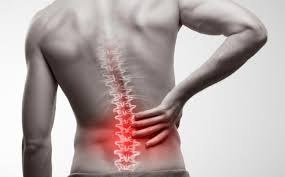
Dealing with back pain can be overwhelming, but effective back pain management can provide quick relief and restore your daily activities. By adopting simple strategies, you can address the discomfort, improve your posture, and strengthen your back. This article shares easy-to-follow tips designed for orthopaedic patients seeking fast and practical solutions.
What Causes Back Pain?
Back pain can result from several factors, including:
- Poor posture during daily activities.
- Strained muscles from overuse or improper lifting.
- Chronic conditions like arthritis or herniated discs.
- Long periods of sitting without movement.
Let’s explore quick, effective methods to feel better and regain mobility.
1. Immediate Pain Relief: Heat and Ice Therapy
Heat and cold therapy can provide instant relief by targeting sore or inflamed areas.
| Therapy | Benefits | When to Use |
|---|---|---|
| Cold Therapy | Numbs the area and reduces swelling. | Ideal for recent injuries or sharp pain. |
| Heat Therapy | Relaxes muscles and improves circulation. | Best for chronic stiffness or tension. |
Use either therapy for 15-20 minutes and alternate for optimal results.
2. Correct Your Posture
Poor posture can worsen back pain. Making small adjustments throughout your day can alleviate discomfort:
| Activity | Posture Tips |
|---|---|
| Sitting | Keep your feet flat, back straight, and shoulders relaxed. Use a cushion for lumbar support. |
| Standing | Stand tall with your weight evenly distributed. Avoid slouching. |
| Sleeping | Sleep on your side with a pillow between your knees to align the spine. |
3. Gentle Stretches to Relieve Tension
Stretching improves flexibility, reduces stiffness, and helps with pain relief. Here are a few simple stretches:
| Stretch | Steps | Benefits |
|---|---|---|
| Child’s Pose | Kneel, stretch your arms forward, and lower your chest. | Relieves lower back tension. |
| Knee-to-Chest | Lie on your back, pull one knee toward your chest, and hold for 20 seconds. | Loosens tight muscles. |
| Cat-Cow Stretch | On all fours, alternate arching and rounding your back. | Improves spinal flexibility. |
Always perform stretches gently and avoid pushing into pain.
4. Stay Active with Low-Impact Exercises
While resting is important, remaining active prevents stiffness and strengthens your back muscles.
| Exercise | Why It Helps |
|---|---|
| Walking | Improves circulation and reduces stiffness. |
| Swimming | Provides a full-body workout with no joint strain. |
| Yoga | Combines stretching and relaxation for tension relief. |
Start with short sessions and gradually increase duration.
5. Ergonomic Adjustments at Work and Home
Creating a back-friendly environment is crucial for preventing and managing pain.
| Item | Adjustment Tips |
|---|---|
| Chair | Use one with lumbar support or add a cushion. |
| Desk | Adjust to keep your elbows at a 90-degree angle. |
| Screen | Position it at eye level to prevent neck strain. |
Taking frequent breaks to stand, stretch, or walk can further reduce strain.
6. Healthy Lifestyle Choices for Long-Term Relief
Your overall lifestyle plays a significant role in back pain management. Maintaining a balanced diet, managing stress, and staying hydrated can contribute to quicker recovery.
| Focus Area | Why It’s Important |
|---|---|
| Diet | Anti-inflammatory foods (e.g., berries, leafy greens) reduce pain. |
| Hydration | Keeps spinal discs healthy and lubricated. |
| Stress Management | Reduces muscle tension that can worsen pain. |
7. Learn Safe Lifting Techniques
Improper lifting is a common cause of back pain. To avoid injury, follow these steps:
- Bend at your knees, not your waist.
- Keep the object close to your body.
- Use your leg muscles to lift, not your back.
- Avoid twisting your torso while carrying heavy items.
8. Try Relaxation Techniques
Stress often worsens back pain, so incorporating relaxation methods can be helpful. Consider:
- Deep Breathing: Slowly inhale for 4 seconds, hold for 4 seconds, and exhale for 4 seconds.
- Meditation: Practice mindfulness to focus on calming your mind and body.
- Progressive Muscle Relaxation: Tense and relax each muscle group to ease physical tension.
When to See a Specialist
While many cases of back pain can be managed at home, certain signs may require medical attention:
- Severe pain that persists for weeks.
- Pain radiating to your legs or causing numbness.
- Pain after an injury, fall, or accident.
An orthopaedic specialist can diagnose the issue and recommend treatments like physical therapy or advanced interventions.
Preventing Back Pain in the Future
| Action | How It Helps |
|---|---|
| Daily Stretches | Keeps muscles flexible and prevents stiffness. |
| Ergonomic Workspace | Reduces strain during prolonged sitting. |
| Regular Exercise | Strengthens your core and back muscles. |
| Weight Management | Reduces pressure on your spine. |
Conclusion
Effective back pain management can provide quick relief and help you regain control over your daily life. From simple stretches and proper posture to staying active and making ergonomic adjustments, these strategies are practical and easy to implement.
Take small steps today to feel better quickly and maintain a healthier back. With consistency and care, you can enjoy a pain-free, active lifestyle!





Leave a Reply